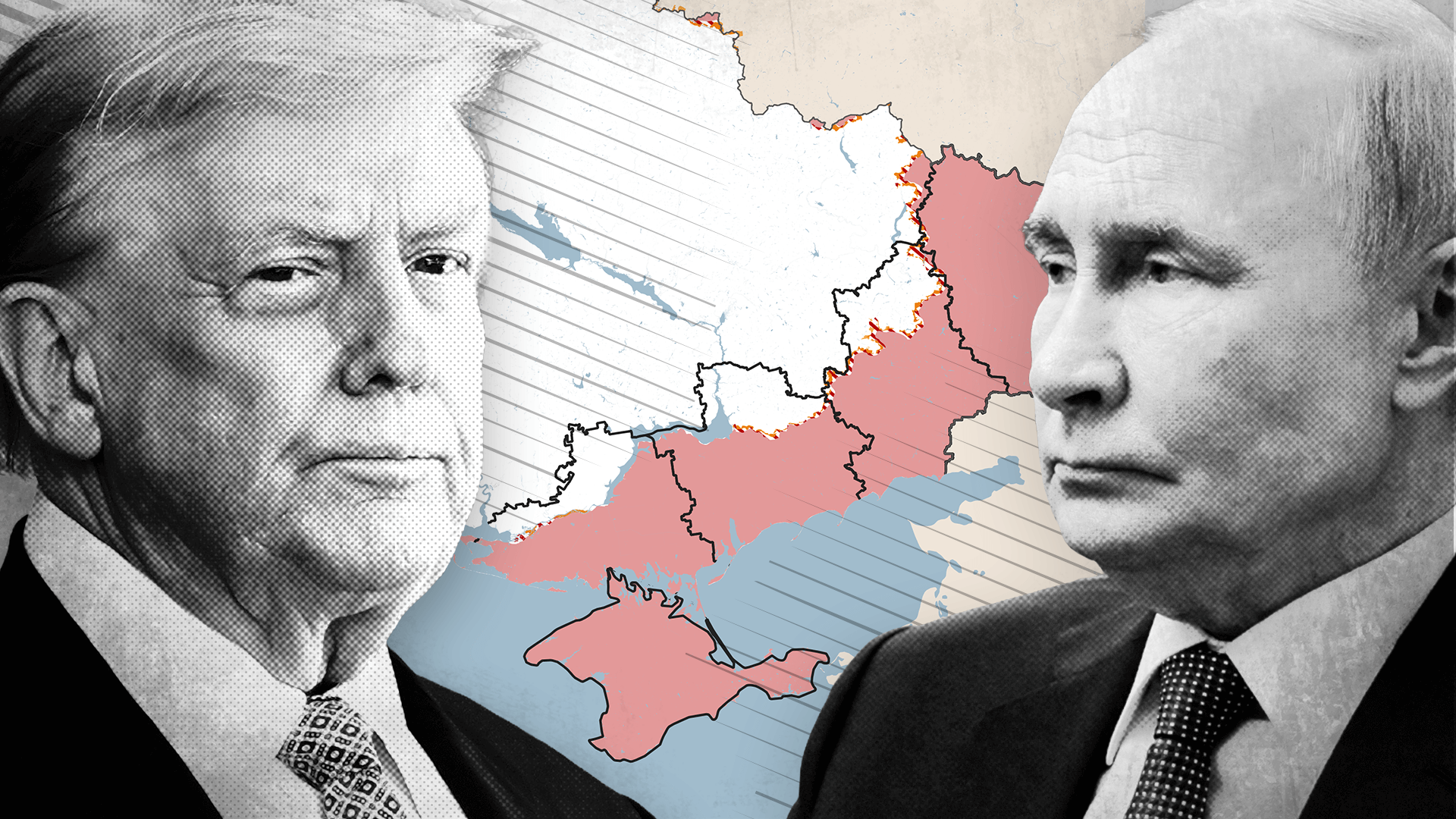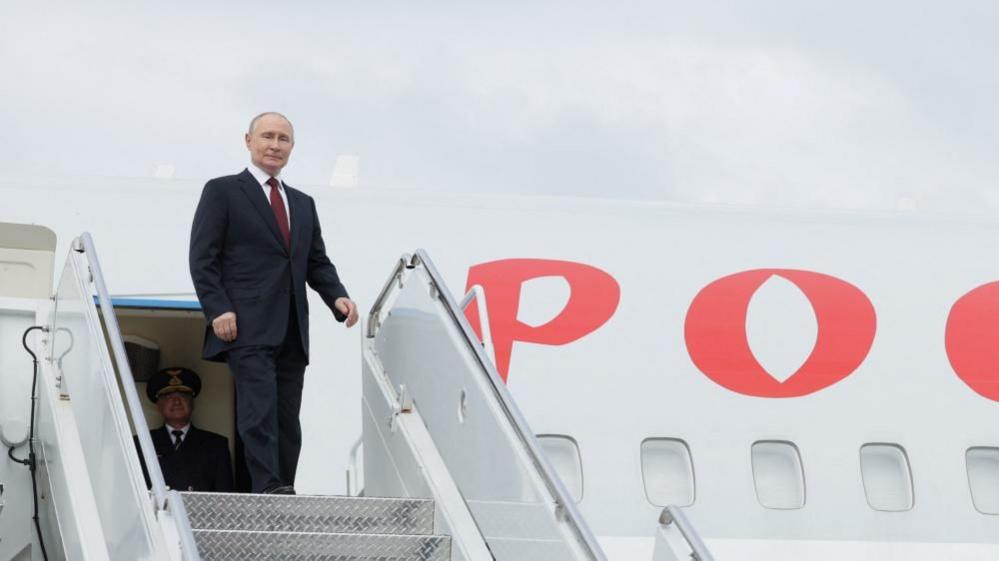'No-one was expecting this': European leaders rush to US to help Ukraine avoid 'capitulation'
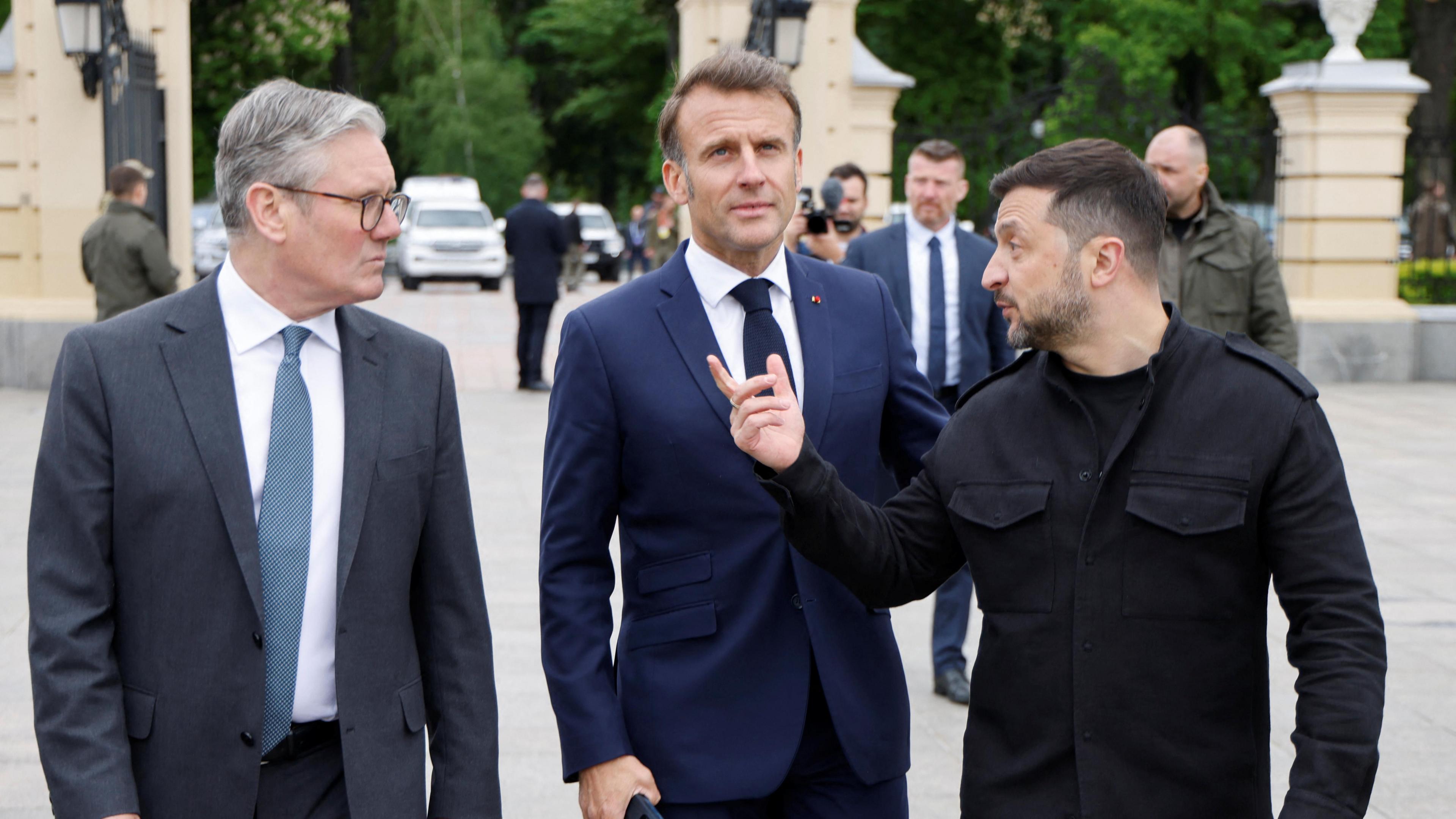
Starmer and Macron - pictured with Zelensky in May - are among the European leaders in Washington
- Published
European leaders may have rushed to Washington ostensibly to throw a protective arm around President Zelensky and head off any repeat of February's Oval Office bust-up.
But their real aim is to stop US President Donald Trump threatening long-term European security after his abrupt change of course over how best to end the war in Ukraine.
Not only did Trump drop calls for a ceasefire as a prerequisite for talks about long-term peace, he also - diplomats say - made clear he had no intention of imposing further economic sanctions on Russia.
In short, the travelling European heads of government – plus EU and Nato leaders - want to avoid not just confrontation, but also capitulation.
Watch: Key moments from Zelensky, Trump White House talks
President Macron of France was the latest to use the C word, saying on Sunday: "There is only one state proposing a peace that would be a capitulation: Russia."
It takes a great deal for heads of government to upend their schedules at short notice – especially in August – when some are on holiday.
The French leader was enjoying water sports on the Riviera. The Italian leader, Giorgia Meloni, had been in Greece.
But such was the scale of President Trump's change of strategy after meeting President Putin – and the consequent potential threat to Europe – that the European leaders changed their plans fast.
Officials say Meloni was first to invite herself along, followed closely by Macron, after which it became inevitable others would have to go too.
The leaders spent the weekend working the phones, holding no fewer than five separate group chats.
Their concern was Trump's decision to change the diplomatic goal posts after meeting the Russian leader in Alaska.
Some officials think the huge impact of these two decisions – which overturned months of western strategy – has been under-priced. Both moves shifted the US position more closely in Russia's favour.
What each side wants from Ukraine talks at White House
- Published18 August
Whirlwind day of White House talks could reshape Ukraine's future
- Published18 August
"Things have moved very significantly and quite quickly to a timetable that no one was expecting," one European official said.
"The US sees this as a moment to strike while the iron is hot. Our question is what are we trying to achieve here?"
They added: "The European position has long been that Putin needs to show a genuine desire to get around a table and stop the war, and that would involve a ceasefire. But since Friday we have moved on from that. The question now is how we can get out of today without a blow-up. This is a moment of extreme jeopardy."
The aim for European leaders, diplomats say, is to shift White House thinking on two issues.
One, the idea that peace can be achieved simply by Ukraine ceding the Donbas to Russia. And two, that this is not just about the future of Ukraine.
"This is fundamentally about the security of our continent," one British diplomat said.
In other words, any discussion about security guarantees – as part of a final deal – would be about ensuring the wider security of Europe and not just Ukraine.
That means convincing Trump of two things: one, that questions about territory and security guarantees cannot be separated, and two, that security guarantees must be about more than verbal or textual promises.
US negotiators have talked about giving Ukraine as yet ill-defined Nato-style assurances that the west would come to Kyiv's aid against future Russian aggression.
"Nobody is clear what Trump means about a security guarantee," one official said.
"He believes that him simply saying to Putin "don't attack" is enough. That's not good enough for Ukraine or us."
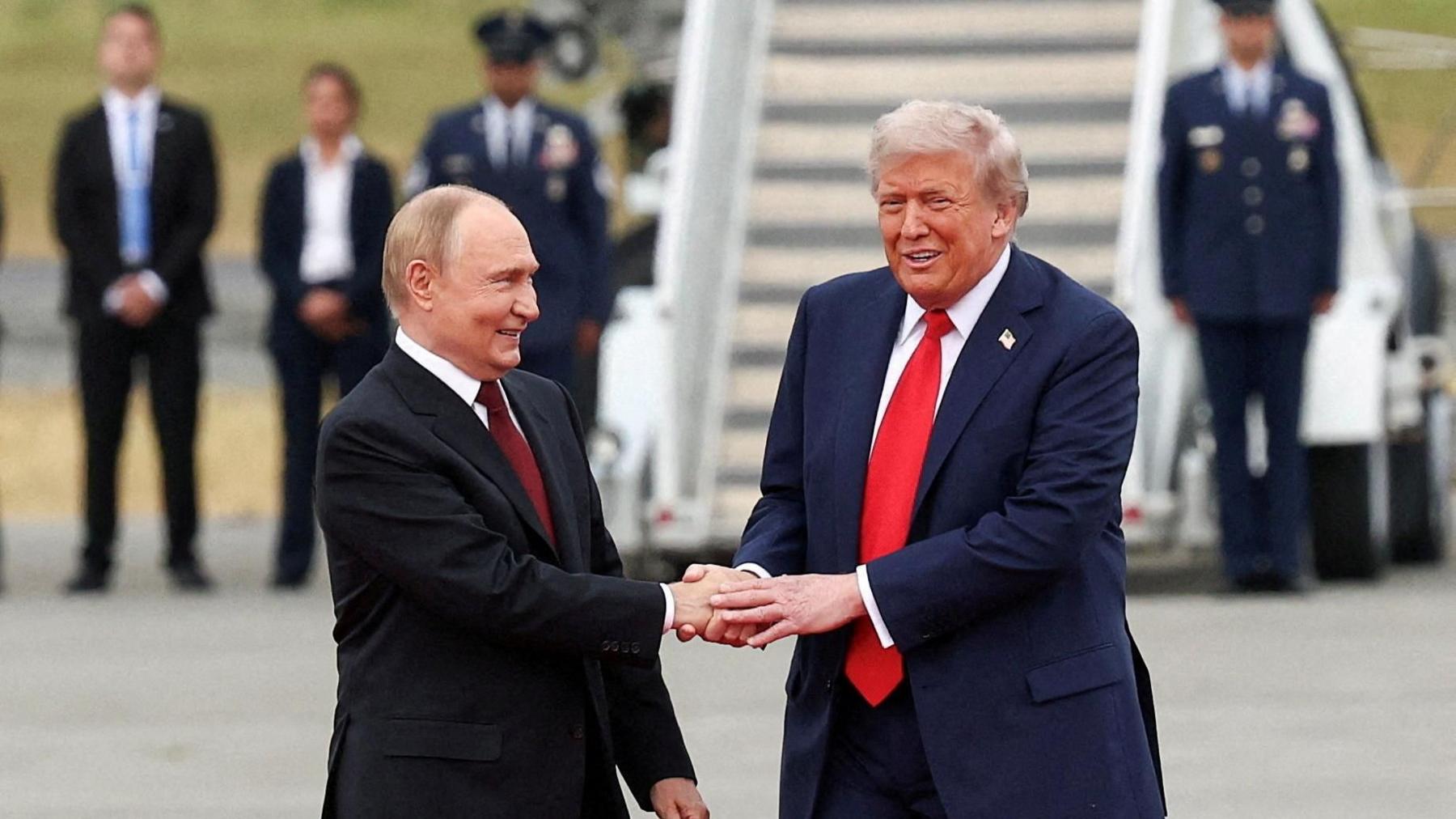
Trump dropped calls for a ceasefire as a condition for talks about long-term peace after meeting Putin in Alaska last week
The Europeans, instead, are expected to argue that Ukraine's security will be guaranteed only by allowing its army to remain strong, with long-term and substantial allied military and financial support.
That would include American weapons bought by Europeans and gifted to Ukraine, plus continued Ukrainian access to US intelligence.
By definition, all that would exclude Russian demands for the demilitarisation of Ukraine.
The risk for the Europeans today is that they push Trump too hard, that he thinks he is being bullied, and that the meetings go badly.
The European delegation has been thrown together at the last minute.
It is – one official said – "quite unwieldy", and some differ on how much Europe should commit to Ukraine's future security.
What role a future European-based "reassurance" force might play in a post-conflict Ukraine remains unclear.
So the European aim today may be to slow things down and calm fevered talk about land-swap deals that should really be part of the endgame of a negotiation.
To some, that would be putting the cart before the horse.
Instead, the European leaders may look for progress on a possible trilateral summit with Trump, Zelensky and Putin; the carving out of some broad principles of any future deal; and how to have talks about talks deciding the location and framework of any negotiations.
And above all, whether this can happen only when a ceasefire of sorts has been agreed.
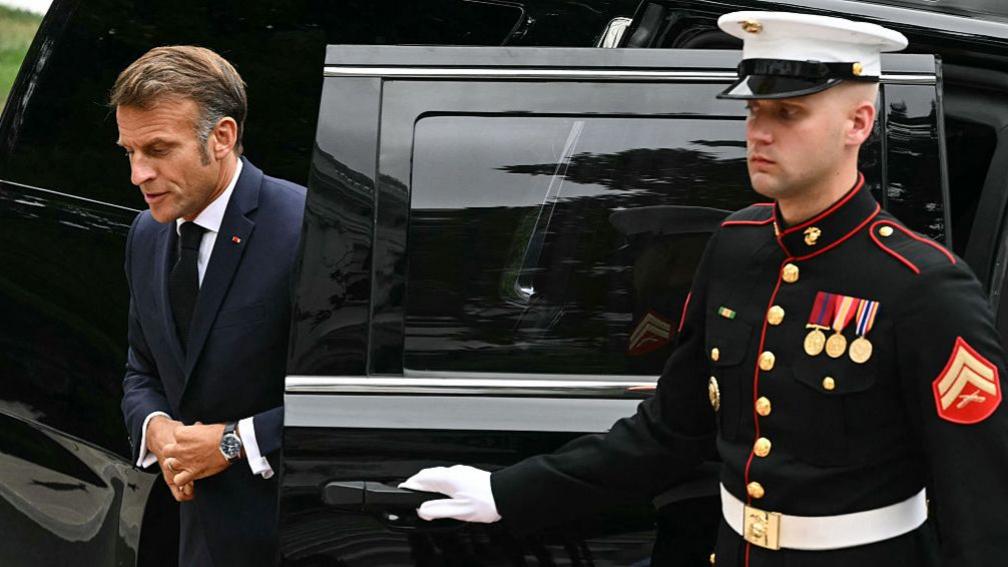
France's Emmanuel Macron said European leaders would ask Trump "to what extent" he would back security guarantees for Ukraine
